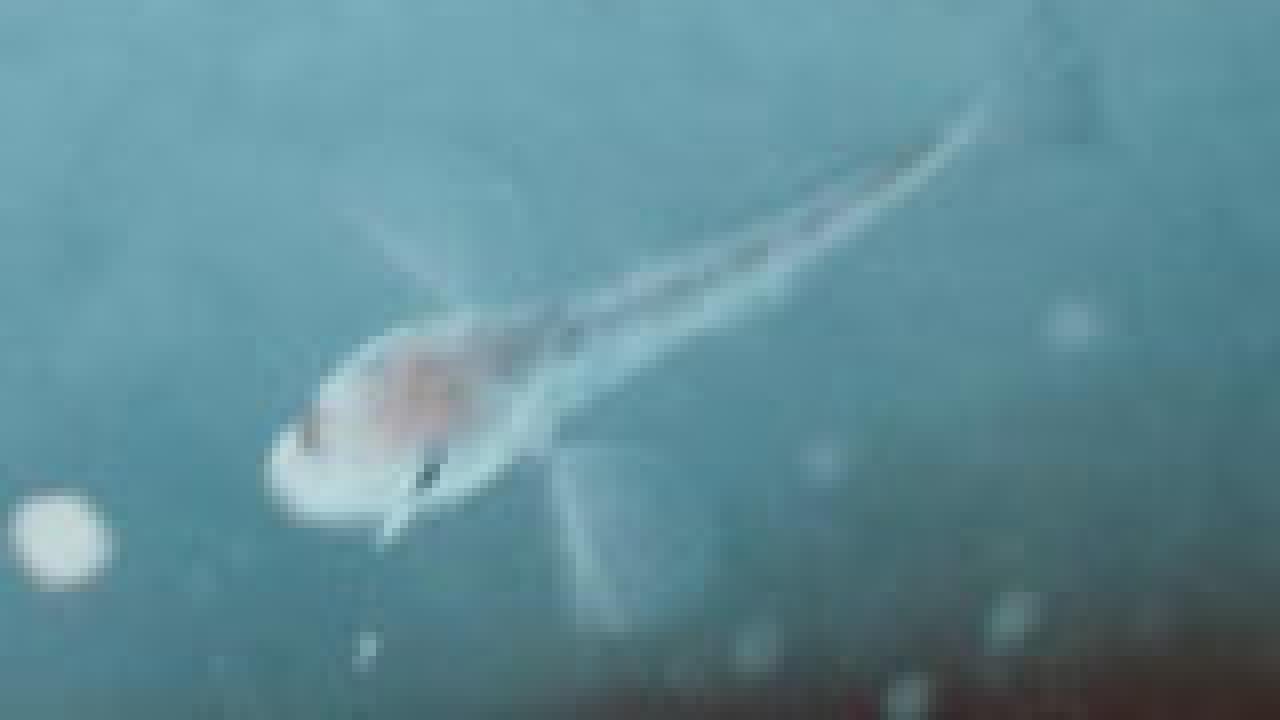Fish in the icy seas around the North Pole and Antarctica thrive in temperatures that would freeze most animals to death in minutes. Their secret: blood proteins that act as a natural antifreeze.
Now researchers at the University of California, Davis, are closing in on just how those proteins work. The research could lead to safer storage for food or blood products. It may also help scientists understand how bones and sea-shells are made and how mineral deposits can cause kidney stones and heart disease.
The antifreeze proteins studied at UC Davis, called antifreeze glycoproteins, are long, floppy and covered in sugar molecules that interact with water. Using nuclear magnetic resonance and infrared spectroscopy, Nelly Tsvetkova and colleagues in the UC Davis Biostabilization Laboratory have found that even in ice as cold as minus 60 degrees Celsius (minus 76 F), the proteins are surrounded with a shell of liquid water and are constantly moving and changing shape.
"Normally at this temperature, proteins are pretty much solid," said Yin Yeh, professor of applied science at UC Davis. The random structure stops ice crystals from growing and preserves liquid water around the protein, said John Crowe, who with Fern Tablin of the UC Davis School of Veterinary Medicine heads the biostabilization group.
The antifreeze proteins also stabilize cell membranes during chilling, Crowe said. As the temperature drops, the fatty molecules that make up the cell membrane change from a semi-fluid to a gel-like state. As this happens, cell contents can leak out. In another recent paper from the UC Davis group, graduate student Melanie Tomczak, now a researcher at Queen's University in Kingston, Ontario, showed that antifreeze proteins bind to specific sugars on the cell membrane and change its structure, preventing leakage.
The antifreeze glycoproteins were discovered by UC Davis biochemist Robert E. Feeney over 30 years ago. Crowe and Tablin have previously shown that they can be used to preserve platelets, a vital component in blood, for up to 21 days in refrigeration. Currently, blood banks can only store platelets at room temperature and must discard them after five days.
Understanding how the antifreeze proteins interact with ice is also helping Yeh and colleagues from the Lawrence Livermore National Laboratory understand biomineralization: how living tissues form hard, crystalline material such as sea shells, bone and tooth enamel.
Crystals such as ice grow along a most-favored direction, Yeh said. Ice, for example, favors growing along a flat plate: that's how snowflakes form. Antifreeze proteins stop ice from growing along the most-favored direction and change the growth pattern of the crystal. In the same way, living organisms use proteins to direct how crystals grow into hard structures such as shells, bone or tooth enamel.
Biomineralization is not always positive. Deposits of different types of crystals contribute to kidney stones, gout and the arterial plaques that cause heart disease. By understanding how antifreeze proteins affect ice crystals, scientists may learn more about how to treat or prevent these diseases.
The papers by Tsvetkova and by Tomczak are both published in the Biophysical Journal.
More information: http://www.mcb.ucdavis.edu/faculty-labs/crowe-tablin/
Media Resources
Andy Fell, Research news (emphasis: biological and physical sciences, and engineering), 530-752-4533, ahfell@ucdavis.edu
Nelly Tsvetkova, Molecular and Cell Biology, (530) 752-1094, nmtsvetkova@ucdavis.edu
John Crowe, Molecular and Cell Biology, (530) 752-2910, jhcrowe@ucdavis.edu
